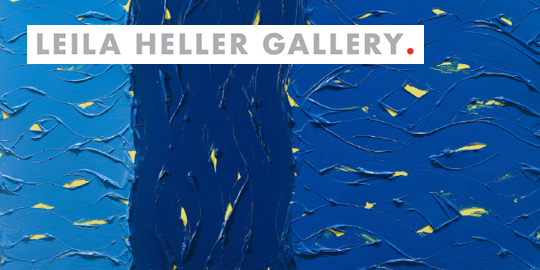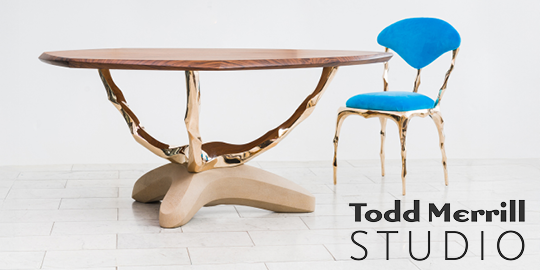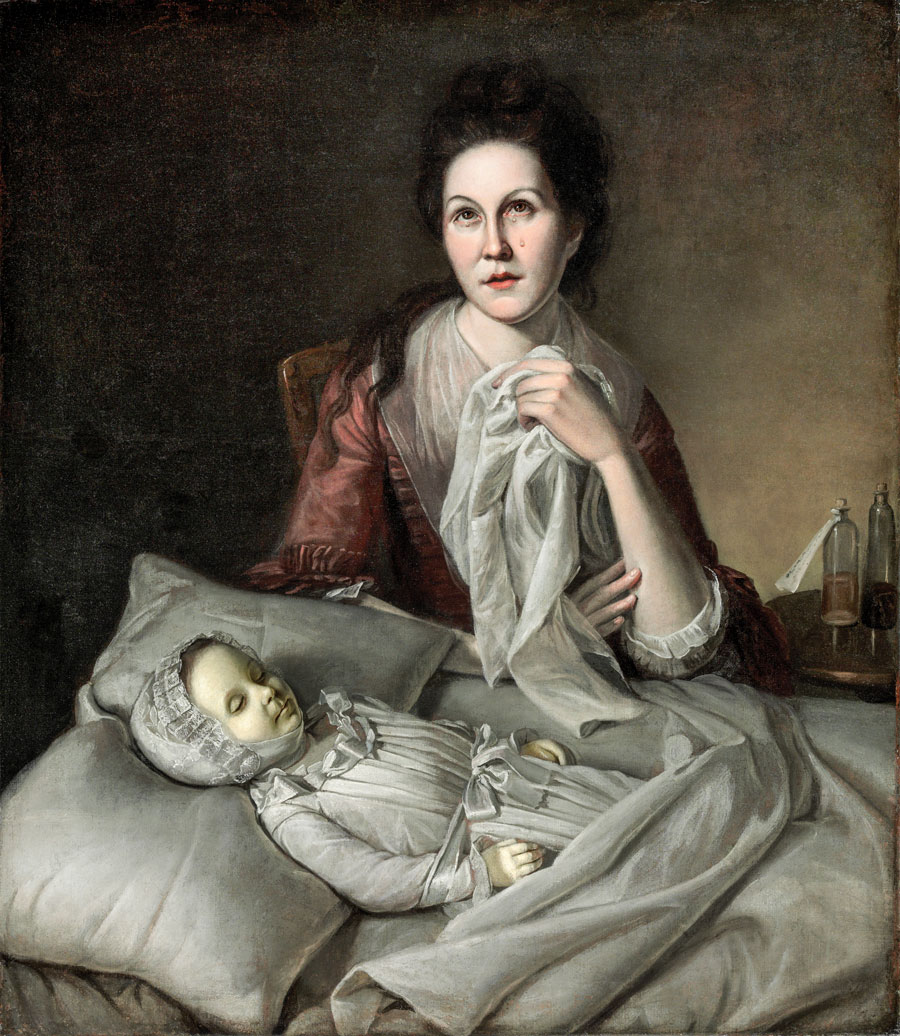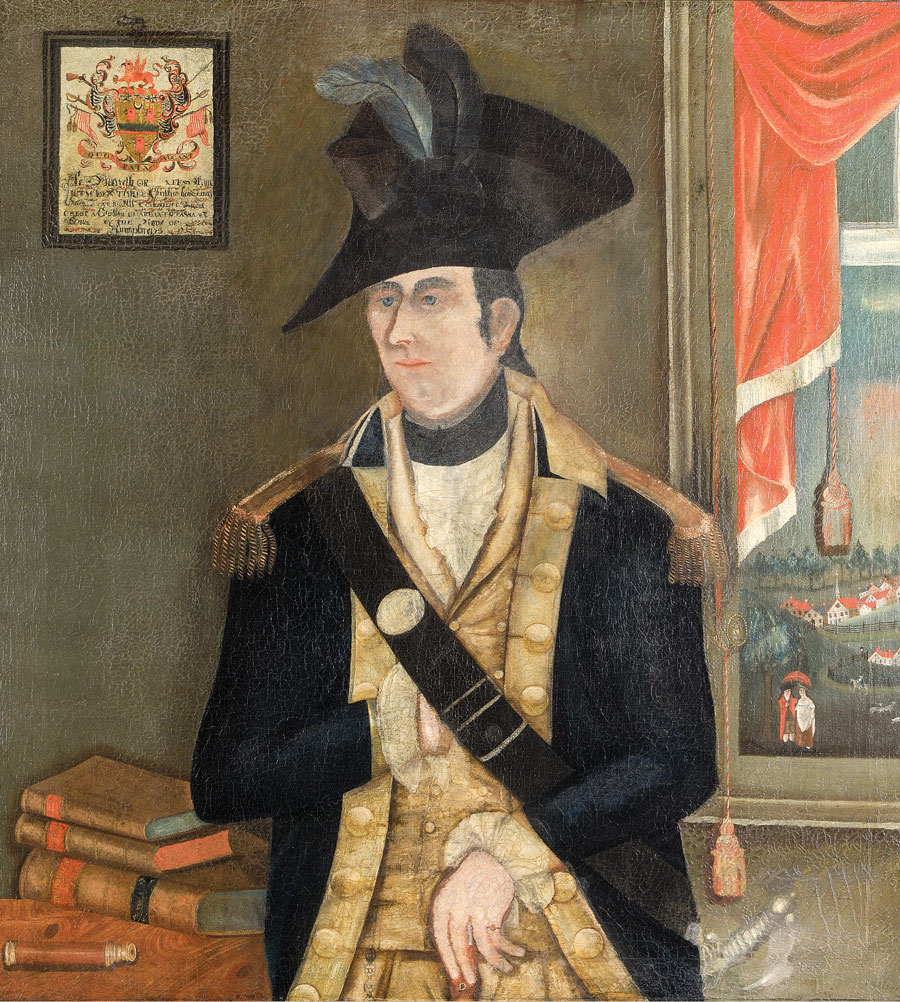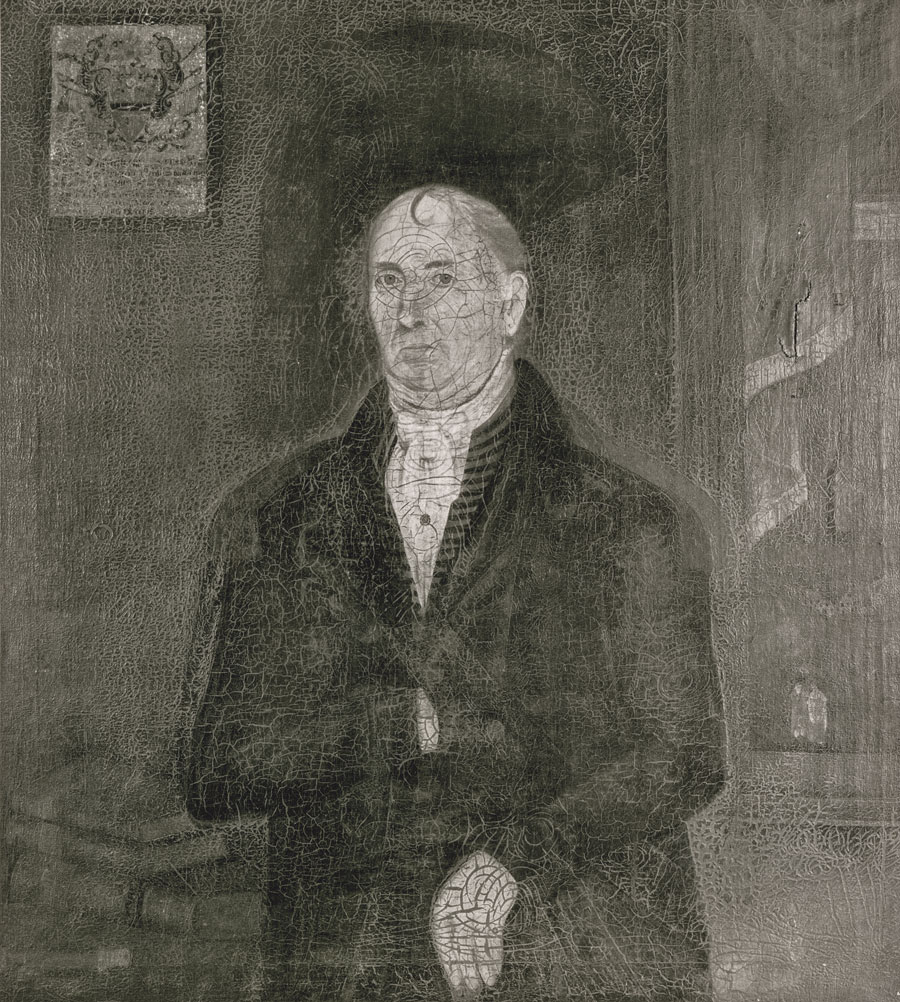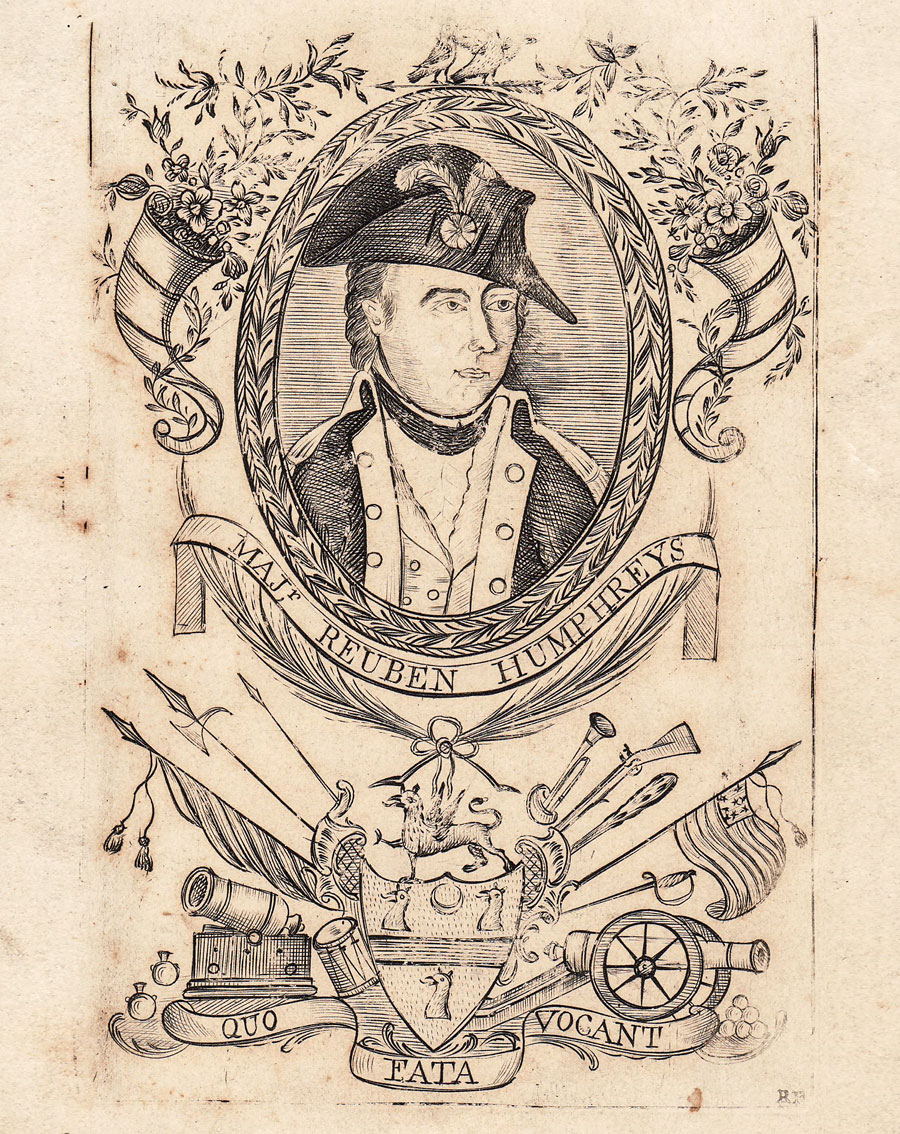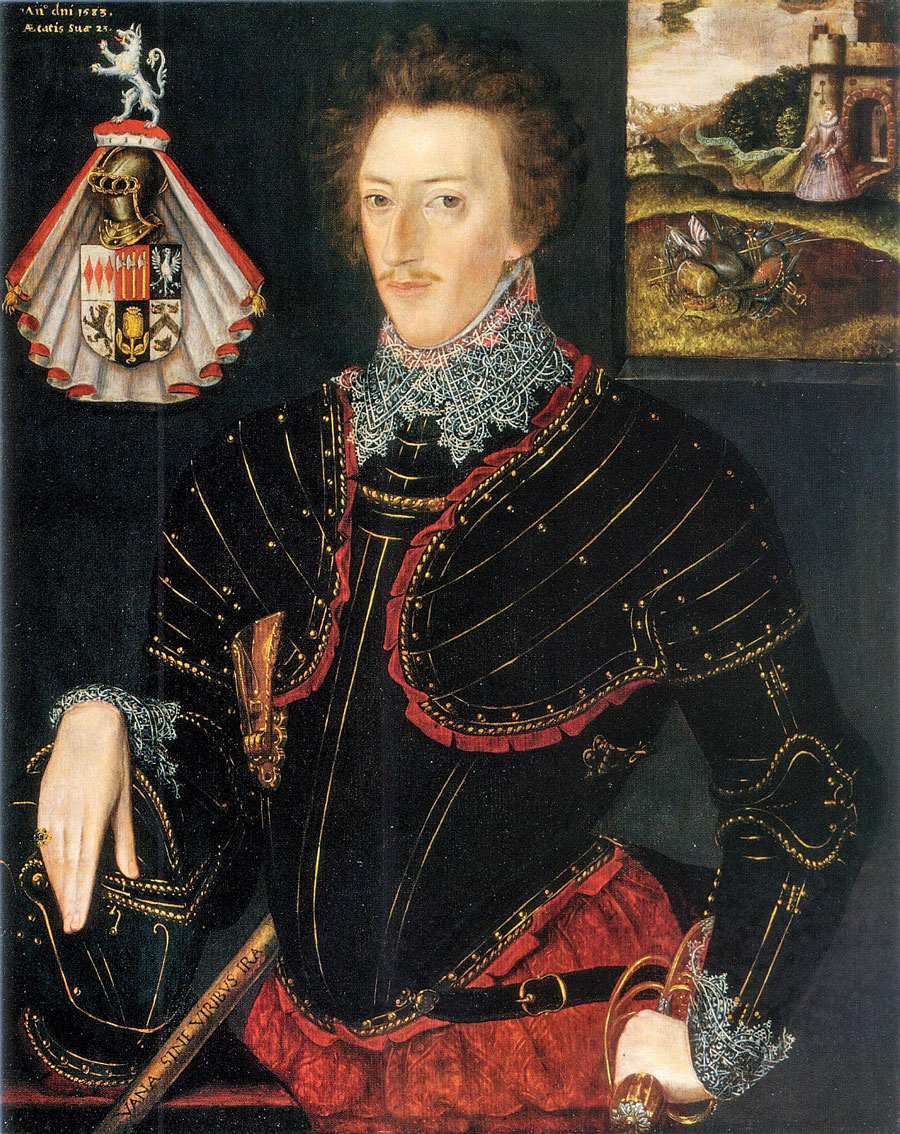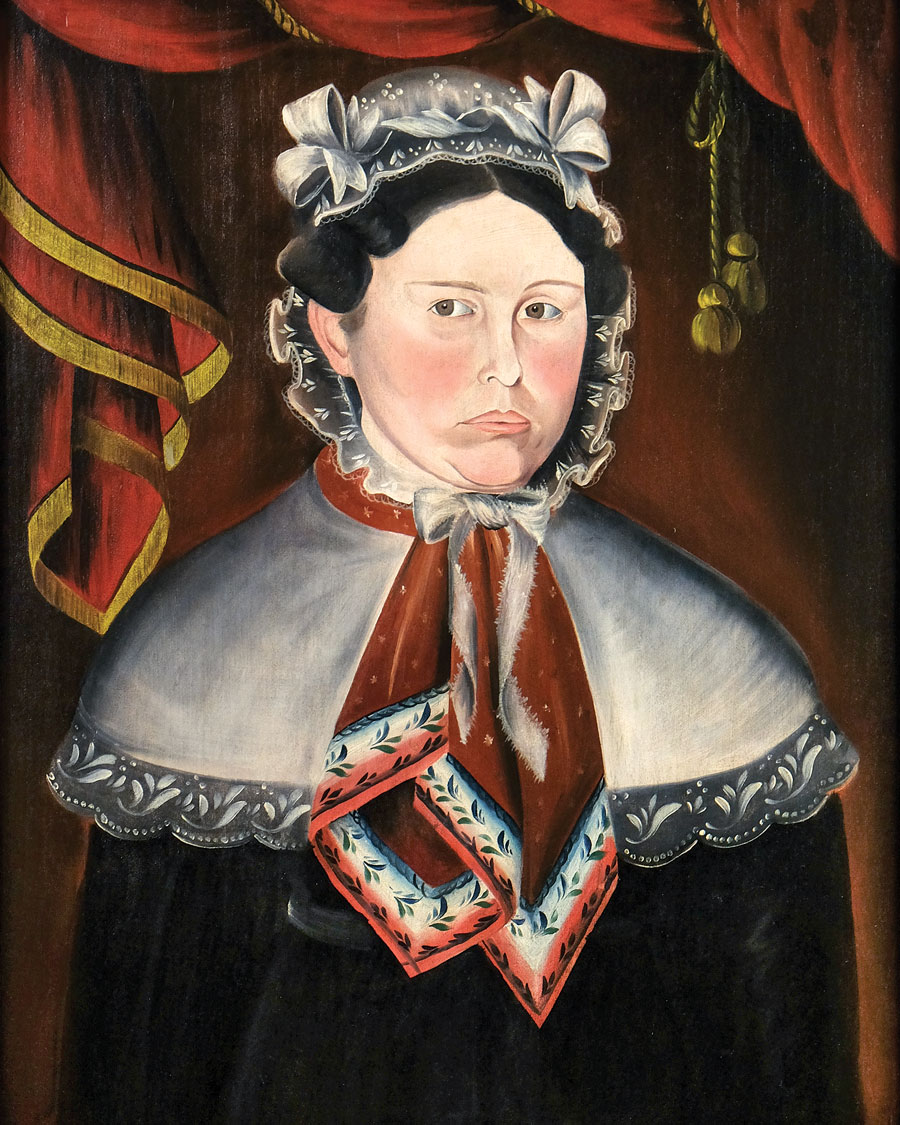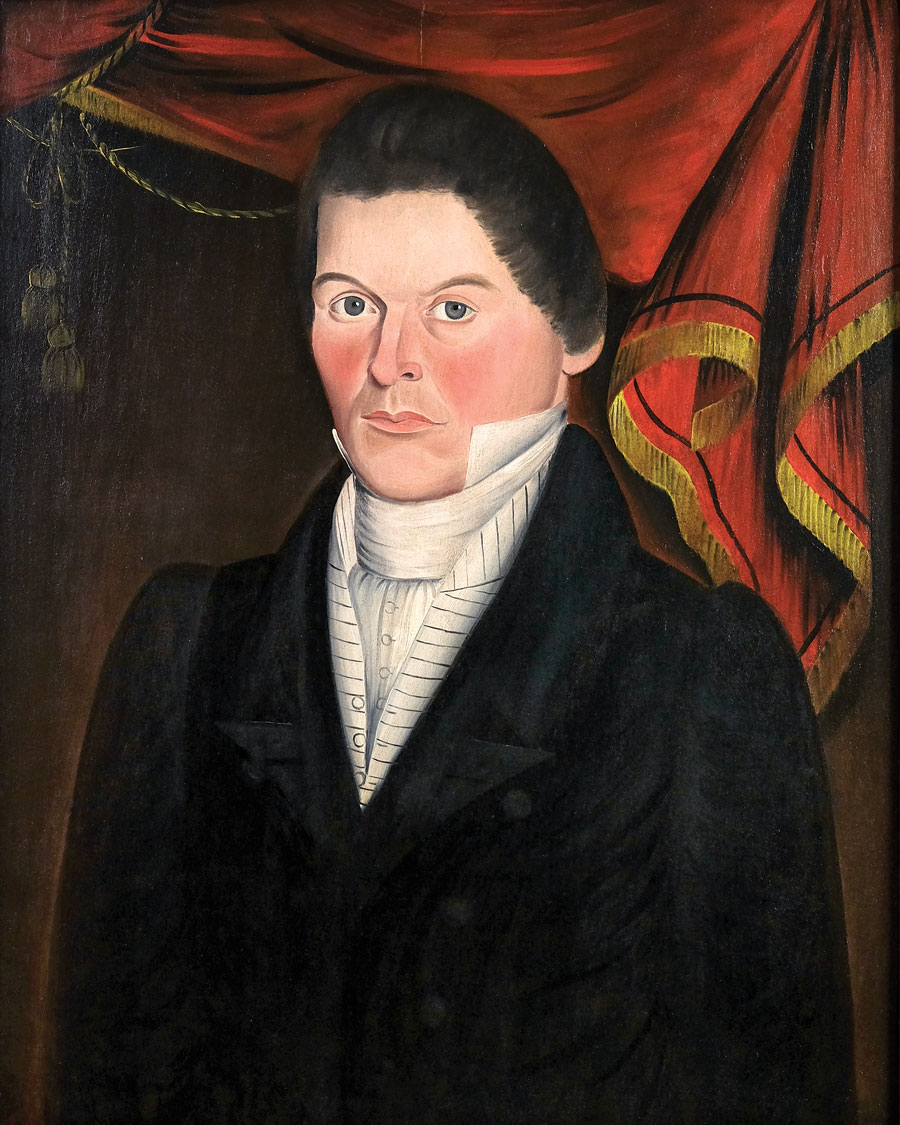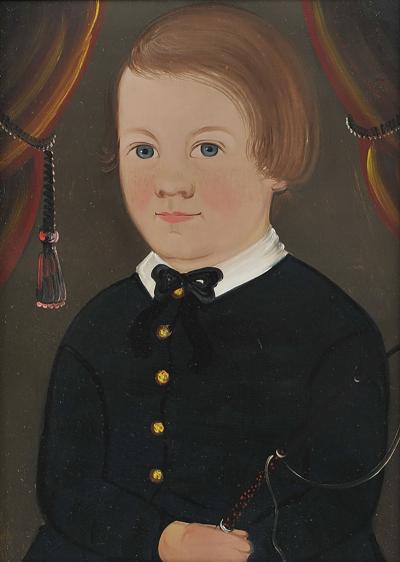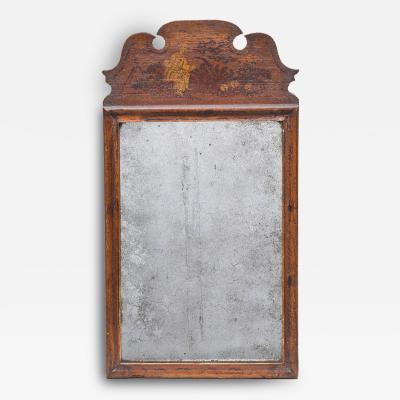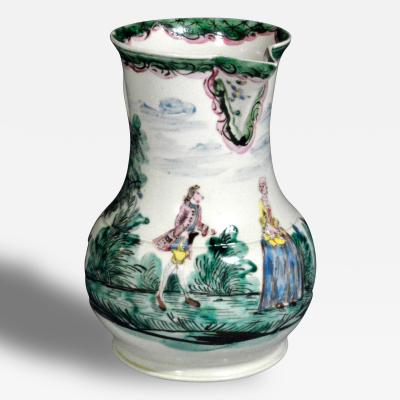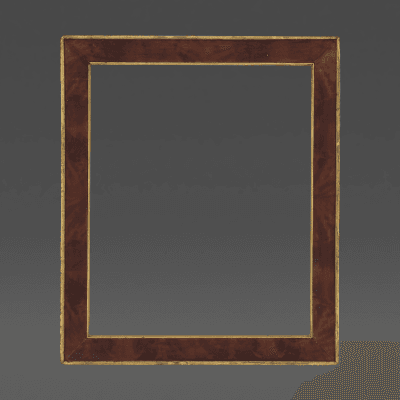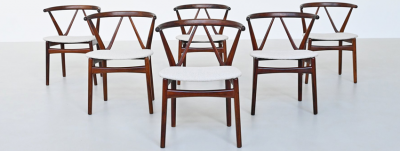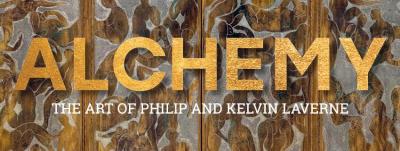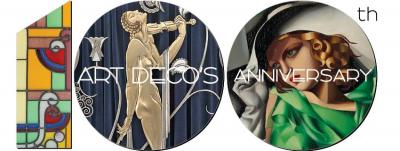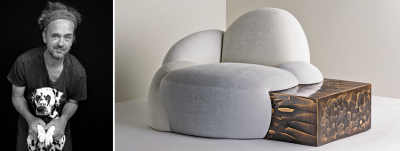Newly Discovered (But Lost) Sheldon Peck Portraits
Many early American portraits have undergone repairs for torn canvasses, have been inpainted, or experienced any number of alterations due to the nature of the material and handling through the centuries. Changes may also exist beneath the surface that cannot be seen with the naked eye. In particular, those made during or near the time of the initial sitting when an artist may have adjusted the turn of a sitter’s head, the position of an arm, or costume details. Numerous examples of portraits that were revised during the painting process have been identified.
Other portraits were repainted after they were completed. As families grew, economic or social status improved, sitters aged, or they experienced personal losses, portraits that had been painted earlier were modified to bring them up-to-date.1 In 1772, for instance, Charles Willson Peale painted a sorrowful postmortem portrait of his infant daughter, Margaret, who died of smallpox (Fig. 1). Four years later, Peale enlarged the original canvas, adding a likeness of his grief-stricken wife Rachel mourning their child. In 1818, Peale again returned to the painting and retouched areas of the canvas; after working on this painting for forty-six years, he was finally satisfied.2
Less well-known examples of this practice are the portraits of Reuben and Anna Pettibone Humphreys and their daughter Elizabeth (Figs. 2, 3). In 1883, the couple’s grandson, Reuben Humphreys Farnham, recalled that the pictures “were painted by a convict in the old Simsbury prison; but many years afterward, his picture was repainted, by some other painter, so as to show him as an old man.”3 In fact, both canvases were extensively overpainted about thirty years after they were originally executed (Figs. 4, 5). Changes to Reuben and Anna Humphreys’ physical appearance and costumes are the most obvious differences. Other changes made to the portraits suggest that the passage of time and grief played important roles in the decision to repaint them.
Reuben Humphreys (1757–1832) of Simsbury, Connecticut, had fought as a private at the Battle of Long Island in the Revolutionary War. Rising through the ranks, he became a captain, major, brigade major and lastly, Inspector of the First Division of Connecticut Militia from 1791 to 1795. Humphreys was “a large, muscular, and portly man, whose usual weight in the prime of life was about two hundred and fifty pounds…a man of might and renown…he developed those habits of push and energy for which his mind and physical nature so well qualified him.” 4 These physical and personal traits, and his military experience, led to his appointment as Superintendent of Newgate Prison at present day East Granby, Connecticut; a position he held from 1796 to 1801.
Newgate had been built over a former copper mine to imprison criminals and Tories during the Revolutionary War, and it became Connecticut’s state prison while Humphreys was superintendent. One of Humphreys’ prisoners was Richard Brunton (1749?–1832). Brunton advertised as an engraver and dye-sinker in Providence, Rhode Island’s, American Journal and Daily Advertiser in 1781.5 Yielding to the temptation that many other engravers also found difficult to resist, Brunton was convicted for counterfeiting coin and sentenced to two years hard labor at Newgate Prison from 1799 to 1801.6
Richard Brunton apparently enjoyed Reuben Humphreys’ confidence during his incarceration, for he was permitted to work at his trade. He produced an engraving of Newgate showing the hardships of the prison (Fig. 6), and also engraved a bookplate for Humphreys featuring his likeness (Fig. 7). The birth of Eliza Humphreys in 1799 perhaps prompted Reuben to commission Brunton to paint the two large oil portraits of himself and of Anna cradling the couple’s infant daughter (see figures 2, 3).7
Brunton depicted Reuben Humphreys in uniform, with right hand in waistcoat, striking a pose that, according to The Rudiments of Genteel Behavior (1737), was the correct position gentlemen should assume when standing or walking to project “manly boldness…temper’d with becoming Modesty,” advising that “…the Bend of the elbow…will permit the Right hand to place itself in the Waistcoat easy and genteel.” 8 A French social convention, which later became an English portrait convention, appeared in this portrait painted in rural Connecticut.9
In the room that Humphreys occupies is a table piled with books and a spyglass—a symbol that may refer to Humphreys’ vigilance and his knowledge of what went on in Newgate. Behind him is a window showing a town view beyond with street activity, and hanging on the wall is a fanciful Humphreys family coat of arms.10 The close similarities between the composition and works such as a 1583 portrait of Sir Edward Hoby (Fig. 8) show that English Elizabethan portrait models were transferred to America. Like the Hoby portrait, Reuben’s likeness referenced the sitter’s lineage and documented his authority and his place in the community.
Anna Humphreys (1759–1827) is dressed stylishly, seated in a Windsor chair in a windowless room. Holding Eliza, she is placed next to a table with a fashionable looking glass hanging above it. The table is set with a flowered ceramic tea service and a pewter plate holding lemon slices. By including these accessories, Brunton shows her as a mother and a woman of genteel taste as would be expected of the wife of a prominent local official. The closed, domestic space she inhabits separates her from the world, in contrast to Reuben’s portrait where the window and spyglass link him to activities outside their home. These settings mirrored the roles the couple assumed in their marriage and community. Remembered as being “fully the equal of her husband in intellectual powers,” Anna “managed the household and farm, while he managed the world outside.” 11
About 1801, Reuben and Anna Humphreys moved to Onondaga Hill near the village of Marcellus in Onondaga County, New York, where the couple raised twelve children. Appointed a judge of the court of common pleas in 1805, Reuben was elected to Congress in 1807 and served four terms in the New York State Senate between 1811 and 1815. After a life in public service, Humphreys retired to his farm in Marcellus, where Anna died on April 1, 1827.
Brunton’s portraits descended to Eliza Humphreys and then to her daughter, Sarah (1829–1898). Sarah married Peter Hartman Sharp, a leather and shoe dealer. In 1867, the Sharps moved from Baldwinsville, New York, to Omaha, Nebraska, taking the portraits with them. The paintings of her grandparents that Sarah Sharp brought west looked far different from Brunton’s original likenesses for they had been repainted. The identity of this second artist has not been the subject of research because the overpaint was removed to reveal Brunton’s original likenesses.12 Stylistic evidence of the later overpainting in pre-conservation photographs (see figures 4, 5), however, indicates they were repainted by Sheldon Peck (1797–1868).
Among the portraits attributed to Peck (for he, like many itinerant artists, rarely signed his work) are the likenesses of his brother, Alanson (1800–1897) and sister-in-law Mary Parker Peck (1802–1877). Among his earliest efforts and dating to circa 1824, these portraits (Figs. 9, 10) descended directly in the Peck family of Cornwall, Vermont.13 Sheldon Peck relocated a number of times, including to Jordan, New York, by September 1828. Between 1828 and 1830, he painted the portraits of a New York couple identified as Mr. and Mrs. Murry (Figs. 11, 12). Possibly depicting William and Elizabeth Murry who lived in Manlius, New York, about thirty miles east of Jordan; the Humphreys lived about twelve miles from Peck.14 The portraits of the Pecks and the Murrys exhibit distinctive features that Sheldon Peck repeatedly employed. The appearance of these details in the Humphreys’ portraits links them to the Peck and Murry portraits.
All three gentlemen wear patterned waistcoats whose collars curve outward to reveal the inner side. Striped and patterned waistcoats with collars drawn this way are a recurring feature of Peck’s Vermont and New York portraits of men. They also provided an opportunity for Peck to add color to men’s attire, which was otherwise predominantly black and white. Mrs. Peck, Mrs. Murry, and Anna Humphreys all wear embroidered caps with two bows on top connected by a twisted ribbon. Caps of this distinctive design with clusters of three or four small white dots and twisting ribbon ties that fall down the front of gowns also appear in several of Peck’s portraits of married women. The edges of all three fichu-pelerines are decorated with similar variations on Peck’s signature trefoil motif. Peck also painted an overlapping hem on baby Eliza’s gown—an example of his life-long interest in how fabric drapes, which he incorporated in other costumes and for swags of drapery. It is difficult to discern Peck’s characteristic technique for rendering hard-edged light and shadow area in Reuben’s and Anna’s faces from the photographic evidence, but their sober expressions are hallmarks of Peck’s style.
As noted, Peck was in New York, and near Reuben Humphreys, a year after Anna died. Reuben, still in mourning, apparently hired Peck to memorialize his late wife.15 Brunton’s paintings presumably no longer satisfied Reuben because they did not show Anna as she appeared at the end of her life, nor himself as the man that he had become, so he felt no obligation to preserve them. Frugality might account for why Reuben didn’t commission Peck to paint new portraits altogether.
Peck repainted Reuben as a stout, aging country gentleman wearing a black frock, striped waistcoat and white cravat. Peck closed the fingers on Reuben’s left hand and painted out the walking stick he had held in the earlier likeness. Reuben’s hand remained tucked in his waistcoat, and Brunton’s books, spyglass, the townscape view beyond, and the coat-of-arms on the wall, were retained. At seventy years of age, Humphreys still projected a formidable presence.
Anna Humphreys was sixty-eight years of age when she died, but she appears younger in Peck’s portrait—younger, certainly, than the two years that separated the couple in life. Perhaps Reuben wanted Anna’s likeness to retain a more youthful appearance? It’s unlikely that Peck ever saw her in person and probably relied on Reuben’s guidance to achieve an acceptable image of her.
Anna’s plumed hat was replaced, her coiffure and costume were updated to late-1820s fashion, and now she wore a double strand of beads around her neck. Updating Anna’s costume would be expected, but the other changes are not. The table, tea service, and pewter plate holding lemon slices were painted over, leaving only the looking glass on the wall. By removing those objects and repainting the reflection in the looking glass darker, Peck made the painting appear more symbolic of death and loss.
Baby Eliza’s likeness was left mostly intact, the most significant changes being opening the fingers on the child’s left hand and adding overlapping folds to the bottom of her gown. Actual “reality” was sacrificed for emotional reality. Perhaps Reuben insisted that, what may have been the only likeness of one of his twelve children as an infant, be retained. This conflation of time periods suggests that Reuben, and possibly the wider culture, perceived a portrait far differently than we do today.
No evidence has been found that Peck repainted other portraits.16 Perhaps, having recently arrived in the county, Peck was willing to accept such a commission from a prominent individual to help establish his reputation and encourage others to patronize him. The strategy may have worked, for more portraits painted by Peck have been found in New York than in Vermont or in Illinois where Peck later moved. The results do not rank among Peck’s most satisfying works, but the circumstances that led to this commission make Sheldon Peck’s portraits of Reuben, Anna, and Eliza Humphreys among his most intriguing.
I thank Maggie Cao and Jules Prown for providing information about other repainted American portraits, and Penelope Smith, former registrar of the Joslyn Art Museum, for bringing photographs of Peck’s portraits of the Humphreys’ to my attention twenty-five years ago.
Richard Miller is an independent art historian and former curator at the Abby Aldrich Rockefeller Folk Art Museum; he is writing a biography of Sheldon Peck.
This article was originally titled "Changes Over Time: Sheldon Peck and the Repainted Portraits of Reuben, Anna, and Eliza Humphreys." The article, with original title, was published in the 16th Anniversary (Spring 2016) issue of Antiques & Fine Art magazine, a digitized version of which is available on www.afamag.com. Antiques & Fine Art and afamag are affiliated with InCollect.
2. Peale repainted finished paintings more than once. The Peale Family, painted in 1773, was not completed to his satisfaction until 1809, when he changed the background, altered his own likeness, and added his dog, Argus. The New-York Historical Society, http://nyhistory.org/exhibit/peale-family (accessed November 20, 2014).
3. Frederick Humphreys, The Humphreys Family in America (New York: Humphreys Print, 1883), 389.
4. Ibid., 391.
5. In Providence, Brunton engraved a portrait of George Washington for the frontispiece of a memorial pamphlet.
6. Albert C. Bates, An Early Connecticut Engraver and His Work (Hartford, Conn.: Albert C. Bates, 1906), 9. See also, Deborah M. Child, “Scoundrel, Artist, or Both? The Tale of an American Folk Artist,” in Antiques & Fine Art magazine (Autumn 2015): 118–123; and Deborah M. Child, "Soldier, Engraver, Forger: Richard Brunton's Life on the Fringe in America's New Republic" (New England Historic and Genealogical Society, 2015).
7. Other oil portraits attributed to Brunton include Deborah Richmond (Abby Aldrich Rockefeller Folk Art Museum, Williamsburg, Va.) and a double-portrait of Deborah’s cousin Elizabeth Richmond and her husband William Cushing Gay (private collection). Brunton also engraved family registers, memorials, and a number of bookplates featuring fanciful heraldic designs.
8. Francis Nivelon, The Rudiments of Genteel Behavior (London: 1737), n.p.
9. Arline Meyer, “Re-dressing Classical Statuary: The Eighteenth-Century ‘Hand-in-Waistcoat’ Portrait.” The Art Bulletin, Vol. 77, No. 1 (March 1995): 53. Few portraits by native-born American artists utilize the pose, the most notable being by Charles Willson Peale’s George Washington (1776; Brooklyn Museum) and Washington, Lafayette, and Tilghman at Yorktown (1784; The Annapolis Complex Collection).
10. Brunton engraved numerous bookplates containing family crests and flattered his clients by inventing coats of arms that their families are not known to have ever used. See Humphreys, The Humphreys Family in America, p. 389, and Bates, An Early Connecticut Engraver and His Work, p. 13.
11. Humphreys, The Humphreys Family in America, 391.
12. The Humphreys portraits were given to the Joslyn Art Museum, Omaha, by a Humphreys descendant. In 1970 they were transferred to the Connecticut Historical Society. In 1971, the overpaint was removed, revealing Brunton’s work. See Barbara Eames, “Restoration of Art Is both Art and Science.” The Day (January 29, 1971).
13. See Jan Albers, “Cornwall Couple Lives on Through Art,” in Addison Independent (May 2006); http://henrysheldonmuseum.org/cornwall-couple-lives-on-through-art.
14. A William Murry (1794–1883) and Elizabeth Crans Murry (1805–1887), whose surname also appears as “Murray” in census data, lived in Manlius, New York.
15. Reuben’s love for Anna is noted in his will when he wrote, “My present feeling, which I conclude will never alter while this poor, lacerated heart shall vibrate, constrains me to request that my body be placed in a grave as near as convenient to that of my kind, affectionate & much lamented wife Anna ded. For as we have walked together for many years this stormy road of life, we may at least move on to common dust together; imagining it possible and hoping that our immortal souls may hereafter reunite in those regions of happiness where we are told ‘all tears shall be wiped from all eyes.’” Probate records for Humphreys, Reuben, Marcellus Onondaga NY-34-E-178.
16. Peck painted individual portraits on panels of William Bott Benjamin and Sally Benjamin of Bridport, Vermont, at the time of their marriage in 1826. After their daughter Flora was born in 1827, the panels were joined and Peck painted Flora standing in profile between the couple. See Sotheby’s, New York, Important Americana: Silver, Folk Art, and Furniture, October 13, 2000, Sale 7521, lot 49.


